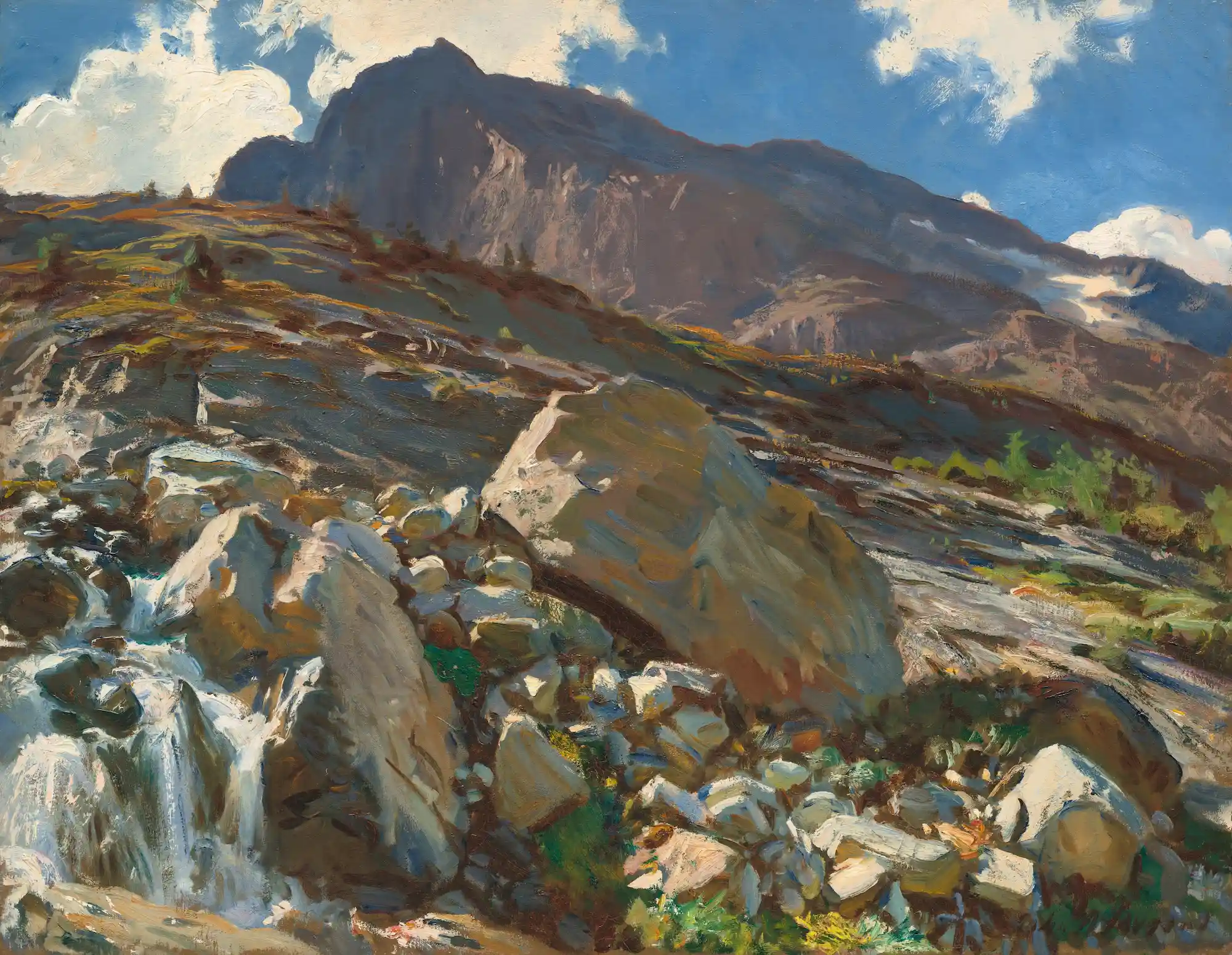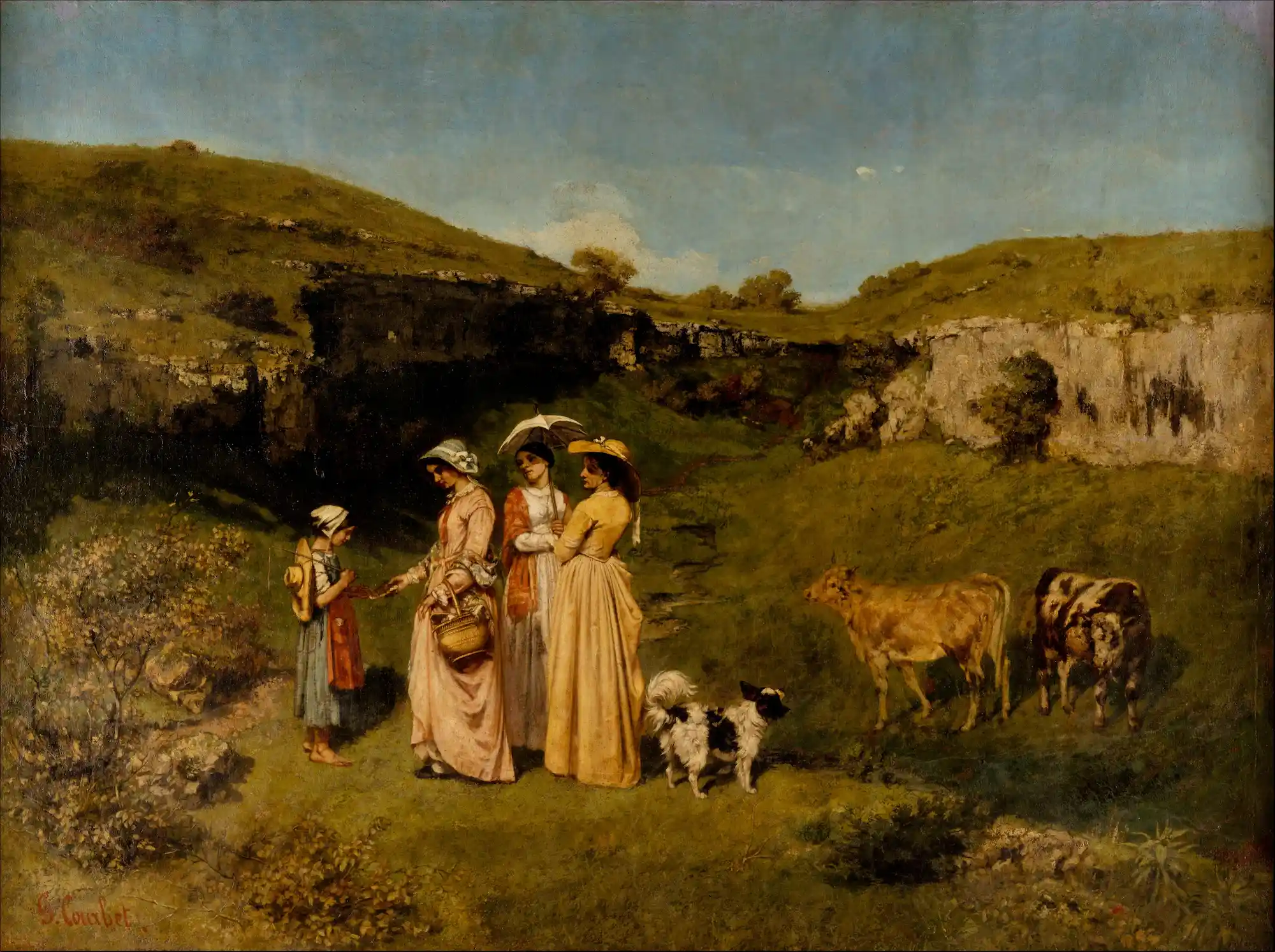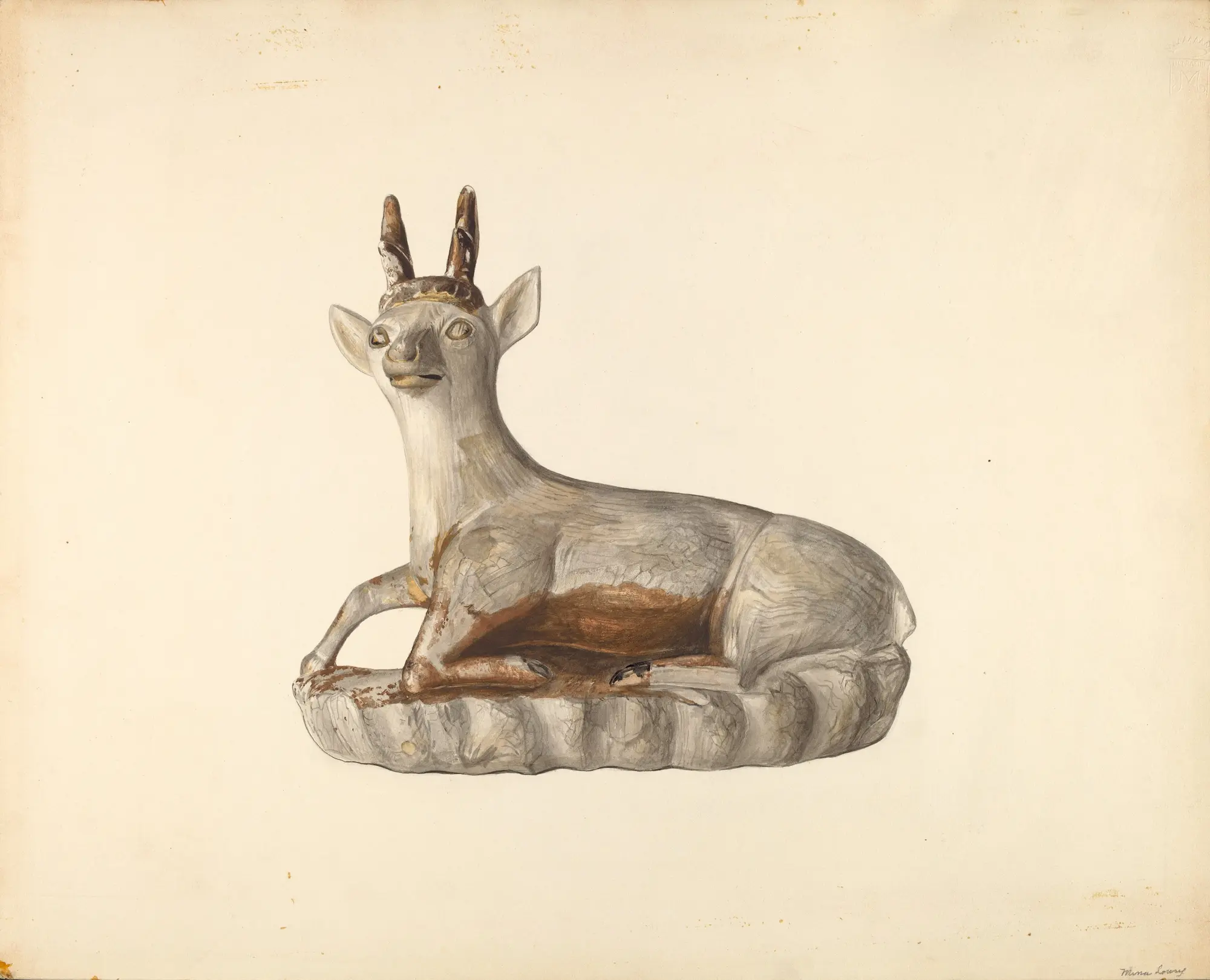
Simplon Pass, by John Singer Sargent
Liminality
"This isn't a dry place but a dried place; this isn't a hot place but a heated place."
A farmer from the Saint Xavier co-op thoughtfully explained this phenomenon to my classmates and me. While I initially took it to be an oxymoron or poetic mumbo jumbo, his message finally resonated with me after some reflection; just because something is one way now, it doesn't mean that it can't change.
I was on a Global Learning trip with my school to Nogales, where my classmates and I were volunteering for several community-based organizations. When working with Native volunteers, I was struck by their warmth toward visitors. At the end of our time together, a chef that we had met had even prepared for us pupusas, enchiladas, and other traditional meals.
Throughout the trip, my classmates and I rode on a large bus and toured the town's many scenic sights. Hundreds of Saguaro cacti were straddled in between the serpentine highway and the Sonoran desert. The sun breathed fire into the night sky and when it set, it left a scarlet-red shine that overlooked Nogales. Then, when night came, the stars almost dethroned the moon, fighting to be the highest in the sky.
I also came to realize that, in Nogales, culture meant everything. In each nook and cranny of the town, you could see the influence of indigenous culture—every ancient monument, a remnant of a past not forgotten. For example, when visiting a local museum, I learned about the Sonoran way of constructing adobe houses. The Sonoran natives hadn't believed in divisiveness; therefore, there weren't any fences in between their homes that could possibly act as barriers from one another. It was very different from the white picket fences that American culture has popularized. I sensed how this inclusiveness and belonging profoundly connected all aspects of their living such as food and the way of life.
But three days into the trip, I began to see what the farmer had shared with me at the beginning of my trip. Change was happening in Nogales. I noticed fast-food chains and spreading gentrification—which both seemed jarring next to the rural landscape.
And just eighty miles away loomed the largest threat to the oneness that I had felt in Nogales—la frontera, or the border.
Just five miles away from the US-Mexican border, the aura suddenly shifted. The environment seemed more commercialized and there were fewer people around. When our group arrived at the border town, we went to a nearby Burger King for a restroom break. To my surprise, I saw several heavily-geared Border Patrol agents eating hamburgers and laughing and made note of this strange encounter.
As we began the walk to the border, a lone gravely path stood in between us and a towering iron wall draped in wired fencing. This was the division between Nogales, Arizona and Nogales, Mexico. The area whirred with hushed walky-talky communication and clandestine talks among border patrol agents over the phone. It might have been my imagination, but I also heard the wall emit static, almost as if it were hissing at those trying to cross to another country.
We formed a line and filed in one by one into the immigration office. Although I went through with relative ease, I could understand how those who didn't fully speak English could struggle with the process. For many people, crossing the border was an everyday reality. It didn't help that the passport and identification checks were very time-consuming and inefficient.
Once I stepped foot in Mexico, I was immediately greeted by a beckoning "Bienvenidos" sign. The Mexican side of Nogales seemed much more lively. Children were folding pesos into paper cranes, and there were numerous tiendas alongside the road. Unlike the US side—where the wall was purposefully off-putting and intimidating—this Nogales felt especially welcoming; I was able to peer into the daily routines of those who lived in the bustling border-town. Later, we met with a guide local to the Sonoran region to hear from another perspective. As he showed us churches and mercados, there was no shortage of the flourishing culture I had witnessed earlier. Eerily, it felt as though the border had divided the unity of Nogales in both the physical and metaphysical sense.
One moment that I will never forget was when our guide stopped in the middle of the road unexpectedly.
"There is a very profound and meaningful place that I would like to show all of you.”
I followed him into the outskirts of Nogales, my mind buzzing with curiosity. Our guide suddenly stopped at a corner-store that was at an intersection of two roads. From our viewpoint, I could once again see the familiar, yet menacing wall. It was enveloped in the same barbed wire as before, except intermittent gleams of sunshine now peeked out.
Just under the wall, there were flowers and candles crowded around a mural of a young boy. I later learned that this decorated corner was a memorial for Alejandro, a young boy who lost his life in a deadly encounter with border patrol. Our guide explained to us that Alejandro had been shot over ten times based on accusations that he was throwing stones over the border. I examined the mural and was taken back to see that he looked like my mirror reflection. The only difference was that I skipped stones over a lake, not a border. The only difference was that when my stone bounced off the water, the ripples didn't reflect a corrupt border system around me. For my entire life, I had gotten to swim in the privilege of safety—something that not many are able to say.
After the guide finished telling us the story, I was seething. When the border patrol killed Alejandro, they didn't just put a stop to all the memories that he had made leading up to the shooting. No. He took away what could have been. Part of the beauty of life is that you get to change over time, but that one border patrol agent suspended Alejandro in that moment forever. He didn't let Alejandro grow up and change, and instead, anchored him to the past.
Nevertheless, Alejandro's story is one of many among those living in the borderlands, and it highlights a much larger problem. When law enforcement only seems to care if your body drops on the US side of the border, it speaks volumes to the underhanded methods the legal system and other systems of power use to undermine non-Americans. I couldn't help but think back to my own cousin from Nepal, who told me that when she came to the United States, people deliberately spoke slowly in front of her, utterly disregarding her obvious fluency. I also remembered how we had seen the Border Patrol agents at the Burger King earlier that day. In that moment, they were genuine and human, but they were also capable of something so inhumane. Is it the person or the system, I asked myself. Only one border patrol agent murdered Alejandro, but the system had set up the wall and the barbed wire that drooped like silver jewelry.
For the rest of the day, I lost myself in Alejandro's tragedy and questions continued to race in my mind. And for the first time ever, I couldn't pinpoint Nogales. In some spots it seemed like a place rich in culture and hospitality, but then in others, divisiveness ran rampant.
And then, right as we were about to leave, a man swerved next to us in his car, meeting the mural dead-center with his gaze.
"Serves him right!"
As it turned out, hatred and ignorance didn't even bother to loom in the shadows; it was right in the open.
Our final day in Nogales finally came, but we still had one last workshop to do with a local poet named Alex. Native to the Arizona-Sonora borderlands, he had dedicated much of his life to documenting Nogales's culture and environment through poetry. He generously invited us to the rustic spot where he wrote most of his work. Once we settled down and sat on top of a haystack, he launched into a poem that he had just completed.
I carefully listen while he recites his piece, trying my best to not miss a single detail. I immediately realize that Alex's words would be strangers on paper and outcasts in a book. His poems were meant to be performed—a tribute to everyday conversation—while also reminding us of what we forget to notice. Alex tells us of his name, which has been given. It bears no connection to his Spanish roots. Instead, it's a painstaking refresher on the systems of oppression that have conspired against minorities and people of color.
Once he finished, we applauded and then dispersed for lunch. I made my way through the lunch line to ask Alex a question that had been weighing on my mind.
"Ever since I've stayed in Nogales, I have either been resolute or conflicted. In one moment, I see a thriving culture, and in another, corruption at the border."
Alex took a moment to reflect, his eyes revealing that I had brushed over old scars. He then told me something that I couldn't grasp at first. I can vividly recount how he told me that this duality that I spoke of—this duality that had haunted me during my visit—didn't exist. Everything, he said, was on a spectrum. In the uncomfortable, cactus-like terrain that I had stood on, there were multiple truths. Not this or that but everything in between.
I thanked him for his insight and returned back to my seat. The group leader, a teacher at my school, then announced that we had to return back to the airport. We waved our goodbyes and boarded onto the bus.
On the bus, I thought about everything I had experienced, as well as Alex's recent wisdom. In Nogales, there were mariposas among the thorns. There was new life that sprung forth from the deaths of ancestors. I remembered all the organizations that we had worked with and how they were so determined to do good. No matter how corrupt one pocket of the universe may seem, there is always a concerted effort to bring light—if you look in the right places.
I thought back to what the farmer had told me when I had first arrived in Arizona, and I came to a realization: Nogales was, and is, a liminal space. It is stuck in the transformation that naturally comes to ancient towns with innovations and time. It is entangled in the frustrating criss-cross between justice and a corrupt system. Nogales is where vivid vida and macabre muerte meet. Where two parallels intersect.
Nogales may be liminal, but we still have control at our fingertips. We decide if Alejandro's death was in vain—and ultimately, where the slider stops on the spectrum.
August 25, 2023
About the writer
Rahul Sharma is a 17-year-old LGBTQ Nepali writer hailing from Seattle, Washington. His work has been recognized nationally by the Scholastic Arts and Writing awards and has been published in Imago, his school's literary magazine. In addition to writing, he loves producing beats and lobbying for new legislation in his state.
Further considerations

With Someone You Care About
By Lola Bosa
My boyfriend likes to undress me in a nonsexual way, or at least that’s how it feels.

Weeping may last through the night, but joy comes with the morning (Psalm 30:5)
The charlatan bilked them // Out of what they’d said was sacred. // The lion's teeth specialize in cutting meat.

midwife and pieces
By M. Frost
stumble // through snow // mounds // belly-deep // form // elemental // letters
